
The Bow Street Runners were the law enforcement officers of the Bow Street Magistrates' Court in the City of Westminster. They have been called London's first professional police force. The force originally numbered six men and was founded in 1749 by magistrate Henry Fielding, who was also well known as an author. His assistant, brother, and successor as magistrate, John Fielding, molded the constables into a professional and effective force. Bow Street Runners was the public's nickname for the officers although the officers did not use the term themselves and considered it derogatory. The group was disbanded in 1839 and its personnel merged with the Metropolitan Police, which had been formed ten years earlier.

A justice of the peace (JP) is a judicial officer of a lower or puisne court, elected or appointed by means of a commission to keep the peace. In past centuries the term commissioner of the peace was often used with the same meaning. Depending on the jurisdiction, such justices dispense summary justice or merely deal with local administrative applications in common law jurisdictions. Justices of the peace are appointed or elected from the citizens of the jurisdiction in which they serve, and are usually not required to have any formal legal education in order to qualify for the office. Some jurisdictions have varying forms of training for JPs.
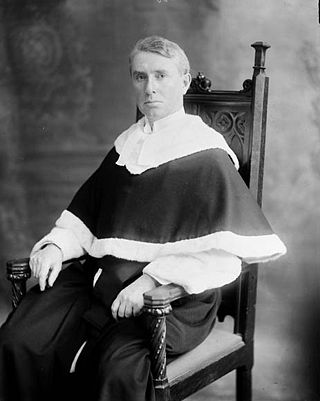
The term magistrate is used in a variety of systems of governments and laws to refer to a civilian officer who administers the law. In ancient Rome, a magistratus was one of the highest ranking government officers, and possessed both judicial and executive powers. In other parts of the world, such as China, magistrate is a word applied to a person responsible for administration over a particular geographic area. Today, in some jurisdictions, a magistrate is a judicial officer who hears cases in a lower court, and typically deals with more minor or preliminary matters. In other jurisdictions, magistrates are typically trained volunteers appointed to deal with criminal and civil matters in their local areas.

A burgh is an autonomous municipal corporation in Scotland and England, usually a city, town, or toun in Scots. This type of administrative division existed from the 12th century, when King David I created the first royal burghs. Burgh status was broadly analogous to borough status, found in the rest of the United Kingdom. Following local government reorganisation in 1975, the title of "royal burgh" remains in use in many towns, but now has little more than ceremonial value.
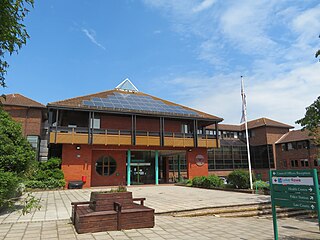
Chiltern District was one of four local government districts of Buckinghamshire in south central England from 1974 to 2020. It was named after the Chiltern Hills on which the region sits.
Deputy assistant commissioner (DAC), formally Deputy Assistant Commissioner of Police of the Metropolis, is a rank in London's Metropolitan Police Service between assistant commissioner and commander. It is equivalent to deputy chief constable in other British police forces and wears the same insignia: a pip above crossed tipstaves within a wreath.
A police burgh was a Scottish burgh which had adopted a "police system" for governing the town. They existed from 1833 to 1975.

Surrey County Council is the county council for the non-metropolitan county of Surrey, England. The council is composed of 81 elected councillors, and in all but one election since 1974 the Conservative Party has held the majority. The leader of the council is Tim Oliver.
Metropolitan Police Act is a stock short title used for legislation relating to the Metropolitan Police.

The Magistrates Court of South Australia is the lowest level court in the state of South Australia. The Magistrates Court, then known as the Court of Petty Sessions, was established in 1837, by the Court of Sessions Act 1837. It has both original and appellate jurisdiction and hears matters specified in the Magistrates Court Act 1991 (SA).
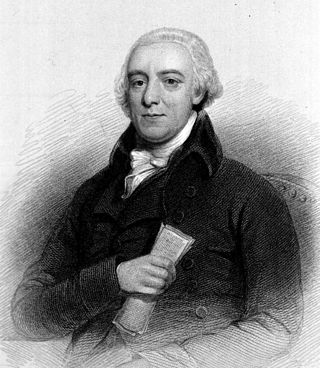
Patrick Colquhoun was a Scottish merchant, statistician, magistrate, and founder of the first regular preventive police force in England, the Thames River Police. He also served as Lord Provost of Glasgow 1782 to 1784.
The Thames River Police was formed in 1800 to tackle theft and looting from ships anchored in the Pool of London and in the lower reaches and docks of the Thames. It replaced the Marine Police, a police force established in 1798 by magistrate Patrick Colquhoun and justice of the peace John Harriott that had been part funded by the West India Committee to protect trade between the West Indies and London. It is claimed that the Marine Police was England's first ever police force.
Police Act is a stock short title used for legislation in India, Malaysia and the United Kingdom relating to police forces and officers.
Thomas William Saunders (1814–1890), was an English metropolitan police magistrate. And a notable revising Barrister-at-law.
The Royal Commission on the Corporation of the City of London was a Royal Commission, established in 1853, which considered the local government arrangements of the City of London and the surrounding metropolitan area.
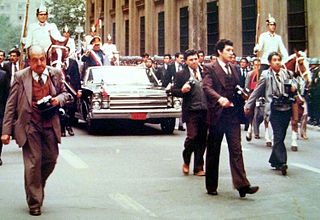
R v Bow St Metropolitan Stipendiary Magistrate [2000] 1 AC 61, 119 and 147 is a set of three UK constitutional law judgments by the House of Lords that examined whether former Chilean dictator Augusto Pinochet was entitled to claim state immunity from torture allegations made by a Spanish court and therefore avoid extradition to Spain. They have proven to be of landmark significance in international criminal law and human rights law.

The Justice and Police Museum is a heritage-listed former water police station, offices and courthouse and now justice and police museum located at 4-8 Phillip Street on the corner of Albert Street, in the Sydney central business district in the City of Sydney local government area of New South Wales, Australia. It was designed by Edmund Blacket, Alexander Dawson and James Barnet and built from 1854 to 1886. It is also known as Police Station & Law Courts (former) and Traffic Court. The property is owned by the Department of Justice, a department of the Government of New South Wales. It was added to the New South Wales State Heritage Register on 2 April 1999.

The Act 39 & 40 Geo. 3. c. 87, sometimes called the Thames Police Act 1800, the Thames River Police Act 1800, the Marine Police Act or the Depredations on the Thames Act 1800, was an Act of the Parliament of Great Britain, granted royal assent on 28 July 1800. As alluded to in its long title, it amended the Thefts upon the Thames Act 1762.
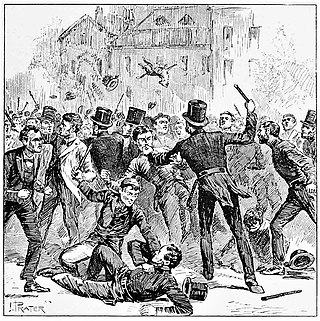
The Coldbath Fields riot took place in Clerkenwell, London, on 13 May 1833. The riot occurred as the Metropolitan Police attempted to break up a meeting of the National Union of the Working Classes (NUWC). Figures for the number of police present at the varied between 70 and 600 officers; figures for members of the public who attended varied between 300 and 6,000. Both Commissioners of Police of the Metropolis, Sir Charles Rowan and Sir Richard Mayne, were present and two British Army officers stood by to summon military reinforcements if needed. It is disputed which side started the violence, but Rowan led a number of baton charges that dispersed the crowd, and arrested the NUWC leaders. The crowd were pursued into side streets and a number were trapped in Calthorpe Street. Three police officers were stabbed and one, Constable Robert Culley, was killed. There were few serious injuries inflicted on members of the public.
The Chief Metropolitan Stipendiary Magistrate, known as Chief Metropolitan Police Magistrate until 1949, and also known as the Chief Metropolitan Magistrate and Chief Magistrate of the Police Courts of the Metropolis, was a senior British magistrate based in London. The most senior metropolitan stipendiary magistrate, the Chief Metropolitan Magistrate had responsibilities for the administration of the London magistrates' courts as well as the appointment of metropolitan stipendiary magistrates. He also had special responsibilities in relation to extradition proceedings. The Chief Metropolitan Magistrate was based at Bow Street Magistrates' Court.













